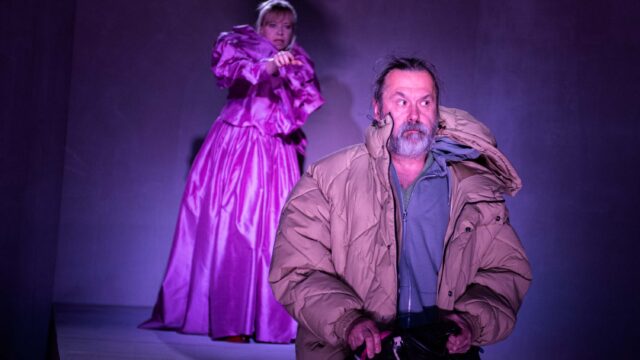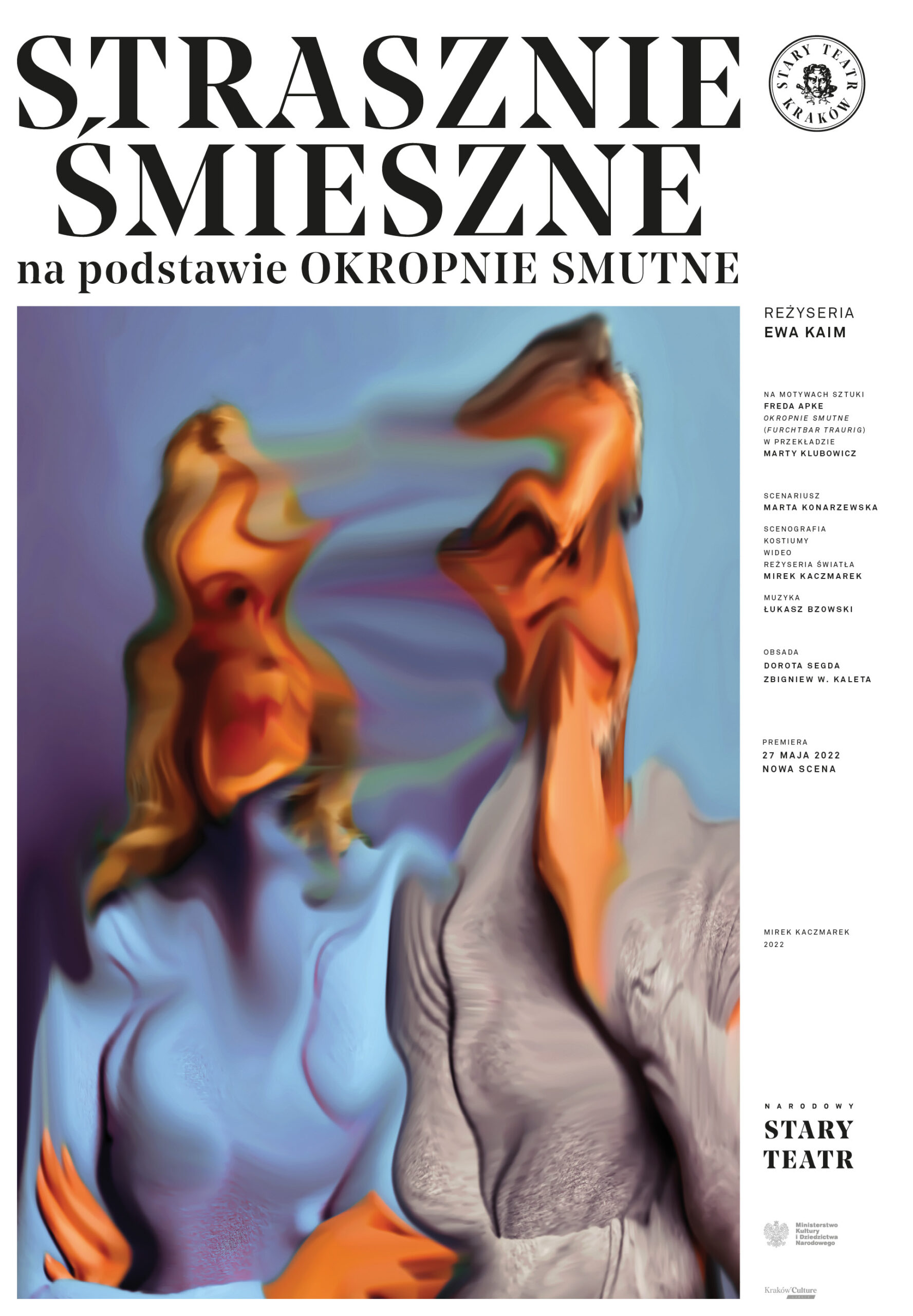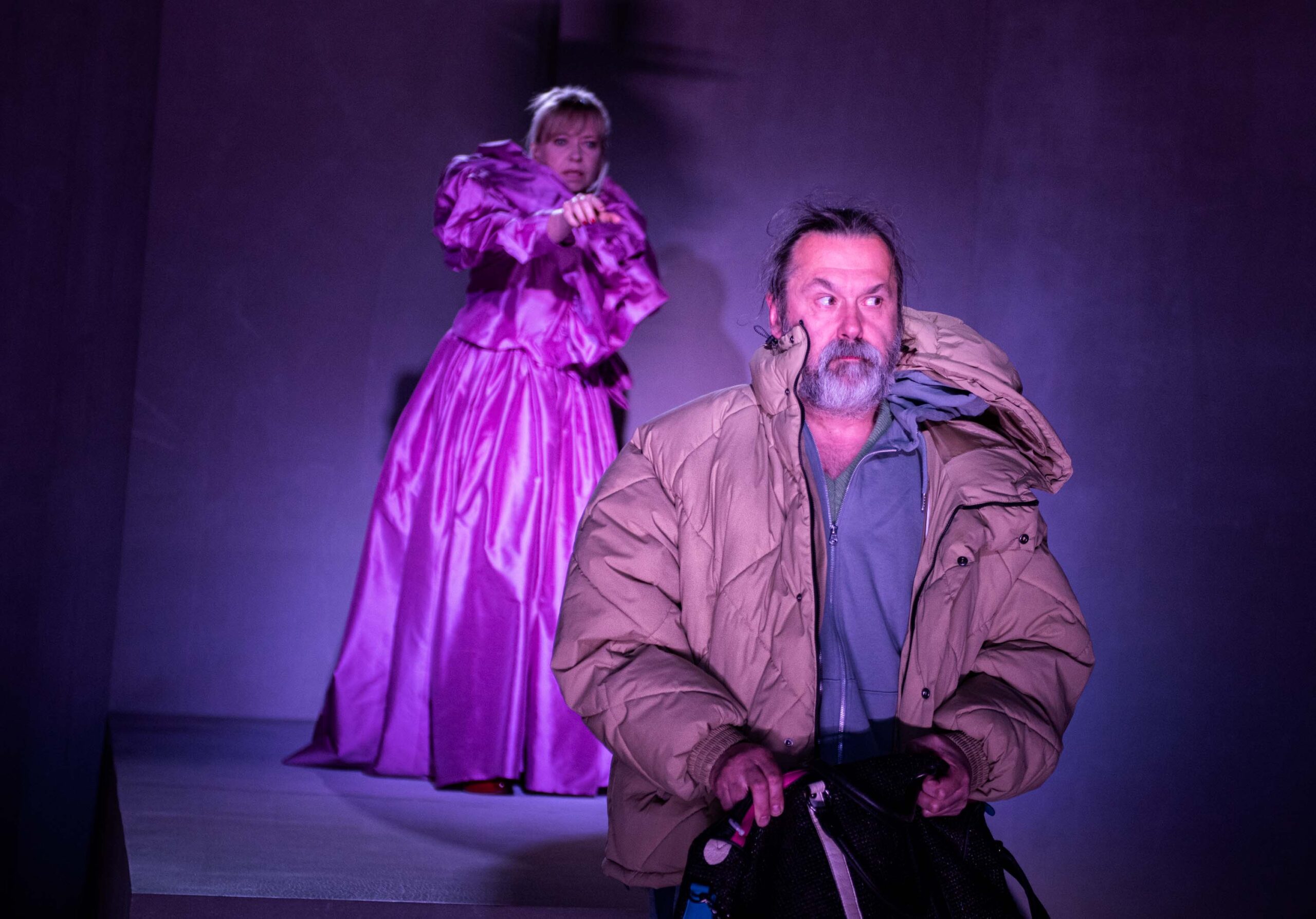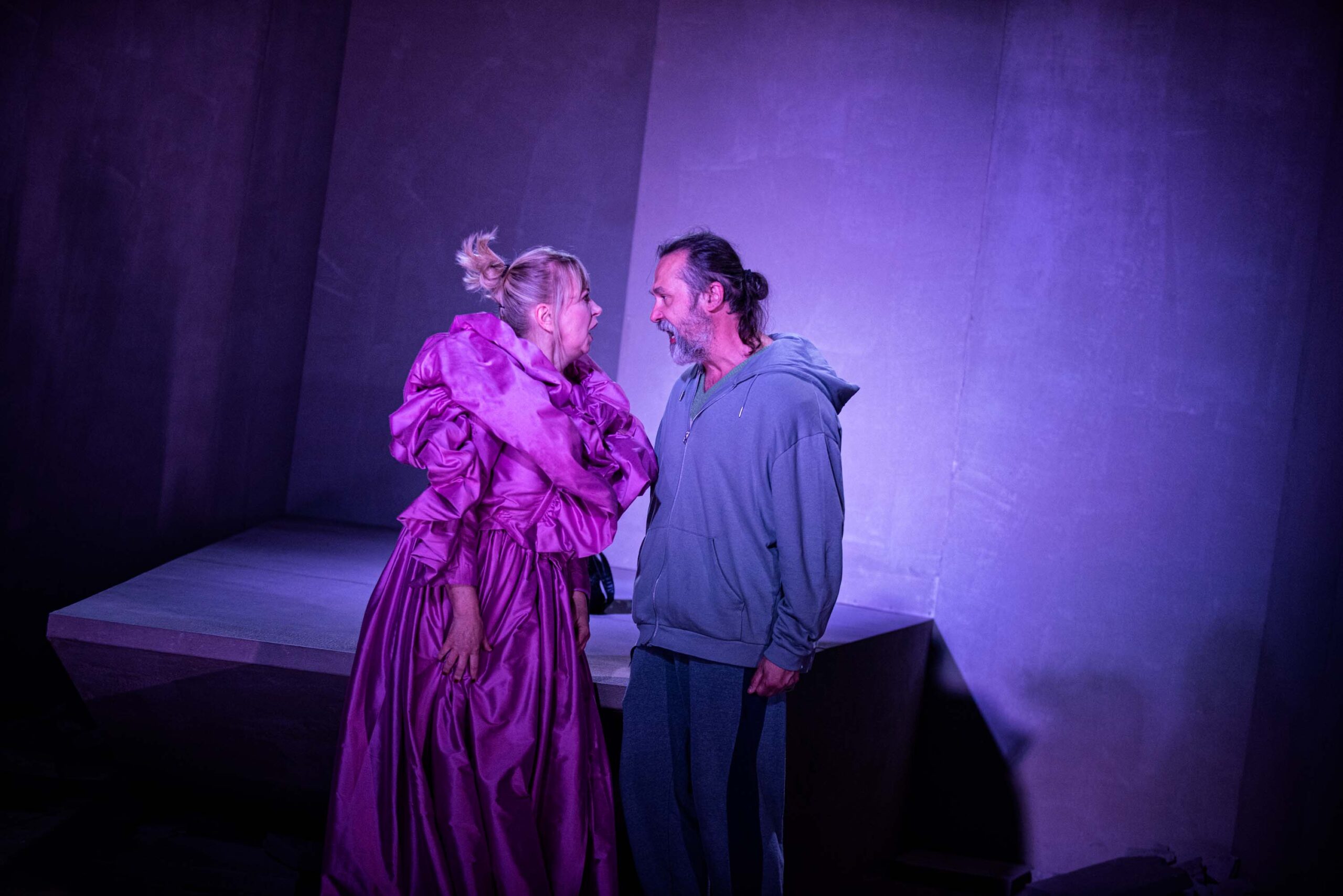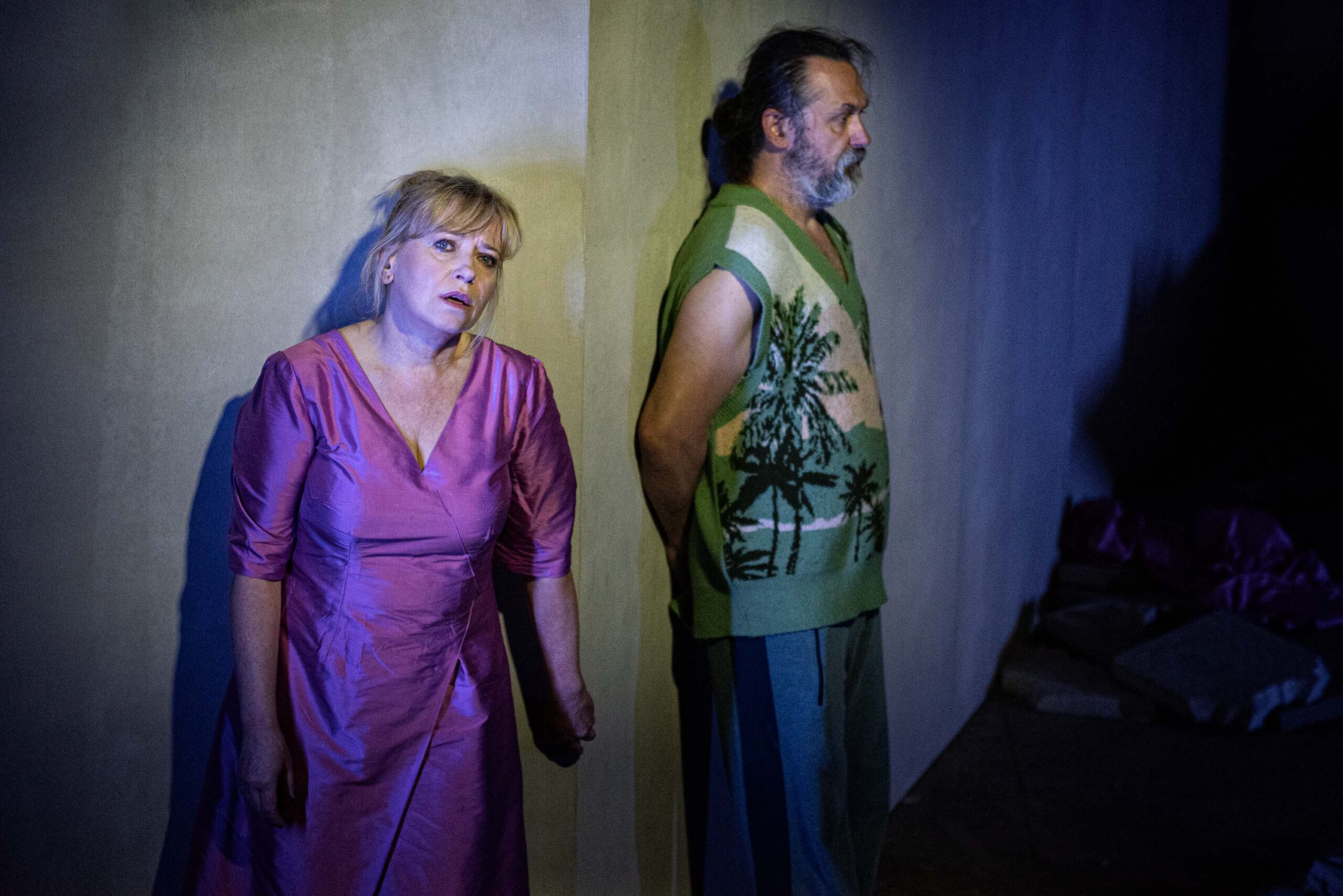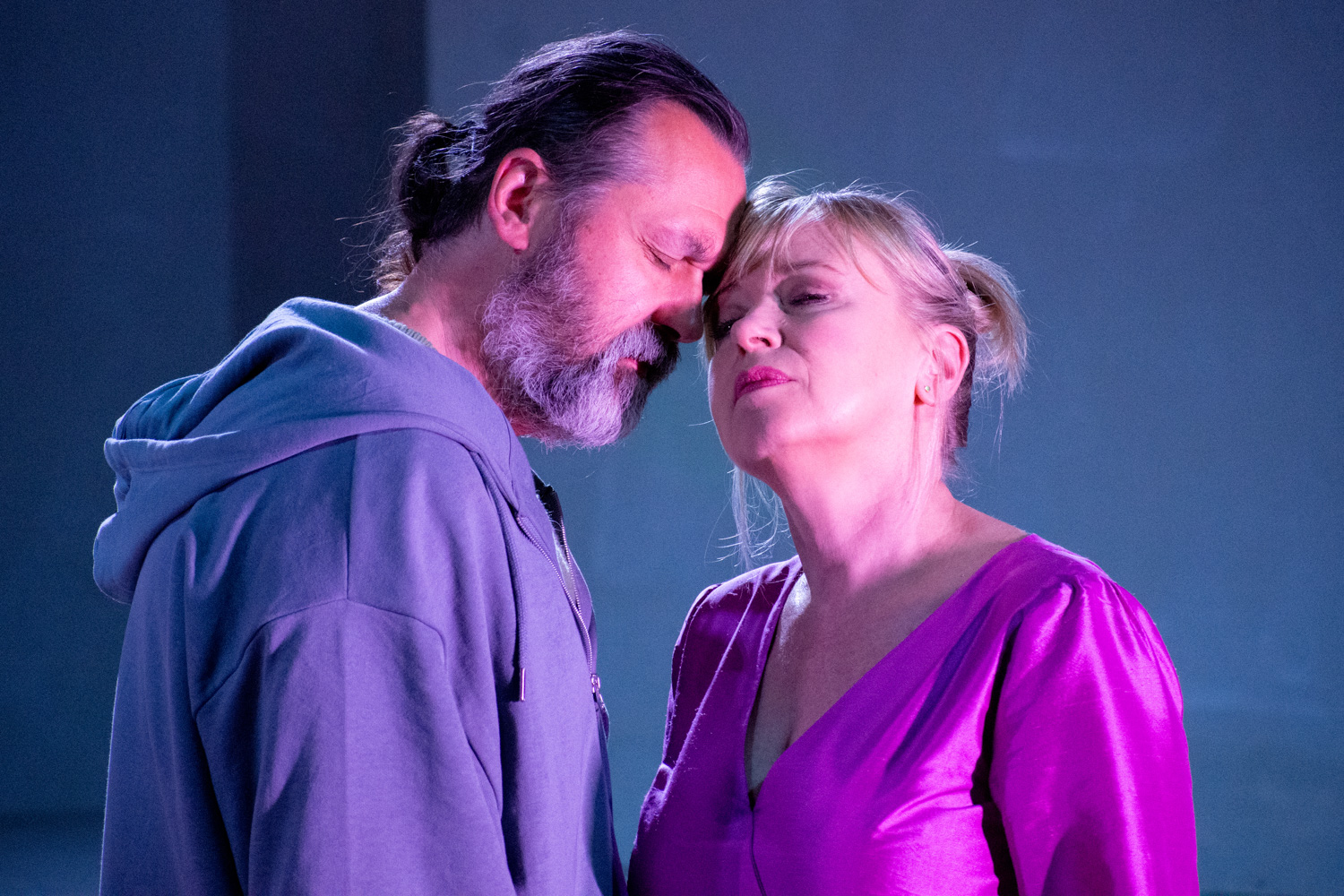Repertoire
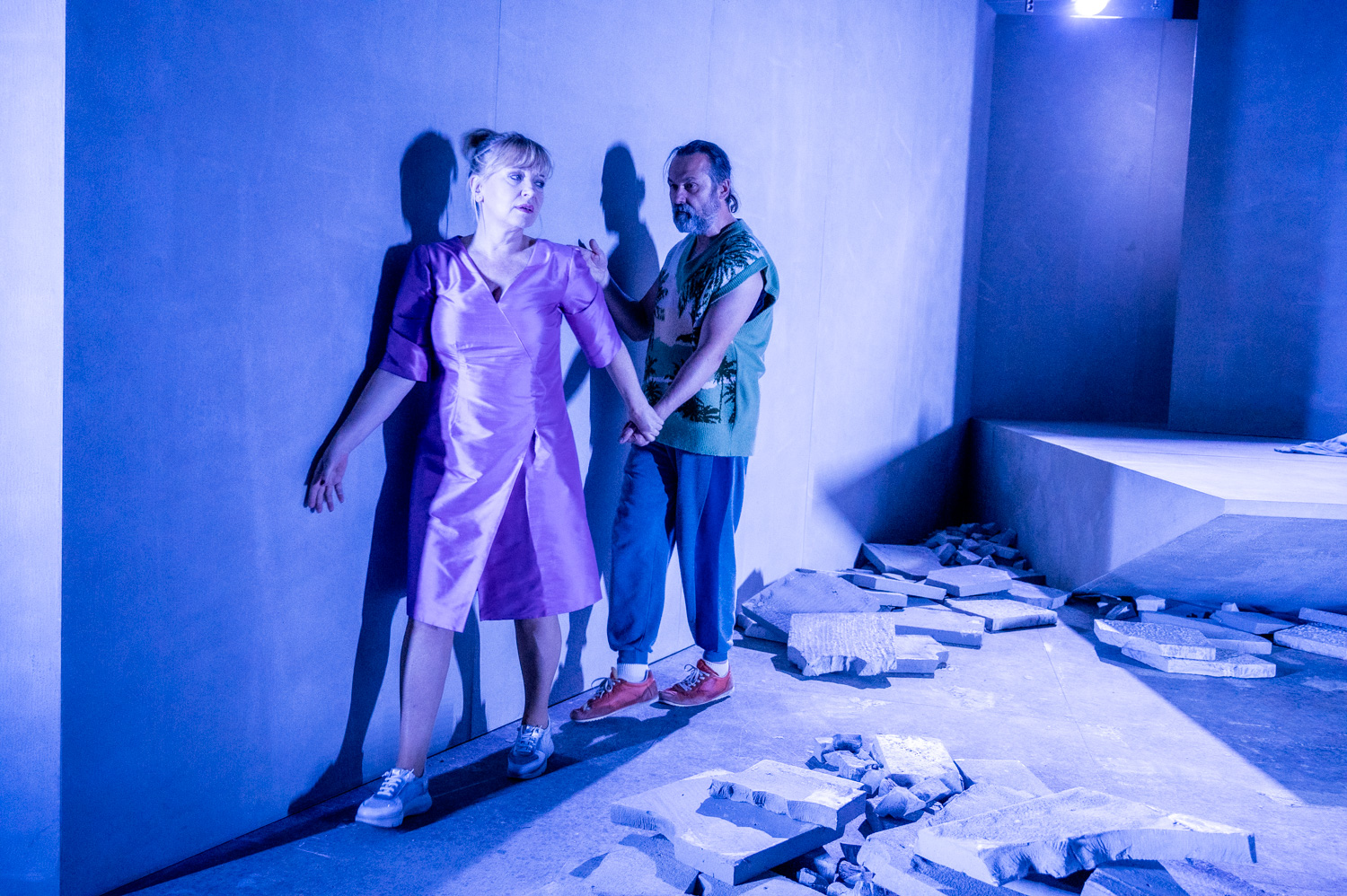
Terribly Funny based on Horribly Sad
Dir. Ewa Kaim
ul. Jagiellońska 1
On motives the play by Fred Apke, Horribly Sad (Furchtbar traurig)
Translation: Marta Klubowicz
Adults turn back into children (…), their delight is caused by the chance to let their thoughts roam free, without having to respect the obligatory rules of logic, which could just remind them of something too painful to abide.
Sigmund Freud
Farce and life are bound by a slender thread. It is nothing other than a game, and like all games, it is mainly played according to prearranged rules.
Henri Bergson
He and She meet in a strange place at an unusual hour. She has come to “soak up” some moonlight, He seems to have never left this place. This place at the edge of a precipice – what is it? She says she wants to catch her breath in silence, but then she can’t seem to stop talking. He does not care for her presence, he wants no dialogue, but then berates her in a crazy fit. Sometimes he can be ruthless: “To get the desired result, comedy requires temporarily anaesthetizing the heart.” For much of the time, things are terribly funny – a farce plays out between Him and Her. As the night wears on, however, cracks begin to show in the comedy, revealing its true causes, a despair at taking charge of something where all other methods of control have come to nothing.
“We built a totally new world around Fred Apke’s play. It served us as an ironic close-up on two people grappling with the tragedy of loss. We posed questions about the possibility of forging bonds, closeness, sensitivity, all over again. Through comedy we speak of a very difficult moment in their lives, maybe the most difficult.”
Ewa Kaim
“Too many young people do not love the world enough to stay in it.”
Marta Konarzewska
What is “Terribly Funny” in Ewa Kaim’s play is the clash between two very different people in an unusual setting—at night, at the edge of a cliff. What is “Terribly Sad” is what has brought those people to the meeting place and the fact that it is not by chance. It occurs on the strength of the convention the two have chosen, which gives them a moment of understanding and closeness, something they gave up on years before when they decided to part. […] The excess of Segda’s character, built through her quick speaking and abrupt movements, contrasts with techniques we know from Kaleta’s acting style. By minimizing his verbal expression, Kaleta communicates his emotions and responses to Segda’s actions with subtle movements, gestures, facial expressions, and small interjections.
Zuzanna Berendt, teatralny.pl
Creators
- Ewa Kaim Director
- Marta Klubowicz Translation
- Marta Konarzewska Script
- Mirek Kaczmarek Scenography, costumes, video, lighting director
- Łukasz Bzowski Music
